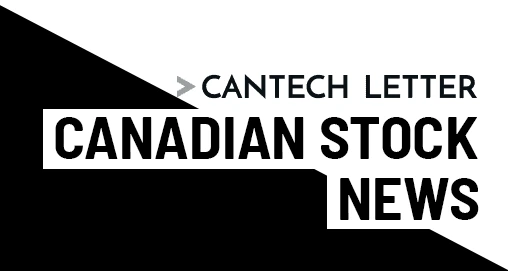
Are Canadian cleantech stocks dead money? Check out a long term chart of most of the issues in the sector stocks and you’ll find a persistent pattern; they fly high on promise then crash and burn on reality.
That reality, more often than not, is that most new technologies face a longer and more arduous adoption cycle than investors allowed themselves to believe. But is there value in the veritable scrap heap of cleantech deals? While some issues are clearly down for the count others have already started to fight back, as the realities of their business proposition may be proving too strong to be dragged down by a middling sector performance. For investors who feel they may have thrown out the baby with the purified and sustainably produced bathwater, we offer, in no particular order, Canada’s ten most intriguing Cleantech stocks.
1. Arise Technologies (TSX:APV)
Perhaps without even knowing it, Arise Technologies began playing a game of musical chairs in 2008. The Waterloo based solar manufacturer raced to $2.53 on April 11th of that year, coinciding with the opening of its first photovoltaic cells plant in Bischofswerda, Germany. When the music stopped, in the form of a global recession and an increasingly out of favor sector, the company was still hemorrhaging cash. In 2009, Arise managed to trim the losses, but only slightly to $41.3 million or 32 cents a share from $42.3 million or 36 cents a share in 2008. The losses meant Arise had to go back to market to raise money, a prospect that was increasingly dilutive as the company’s share price fell to pennies. Immediately after closing a financing in late 2009, analysts were pointing out that the infusion would not be enough.
By the time 2010 ended the company had more than 250 million shares outstanding. So game over, right? Maybe not. It may yet prove to be too little too late, but Arise seems to be finally delivering: Sales for the quarter ended Sept. 30, 2010, amounted to $23.0-million, compared with $6.6-million in the third quarter of 2009. Photovoltaic cells from their German plant accounted for 89 per cent of sales.
2. Ballard Power (TSX:BLD)
The cleantech winds of change have not been kind to Burnaby’s Ballard Power. Hydrogen fuel cells were once the green automotive solution of the future, and everyone was looking to pile in. In 1993, the same year that Ballard IPO’d at $6 a share, the company demonstrated the world’s first zero-emission, fuel-cell bus. The promise of the company’s technology seemed both limitless and inevitable and it was reflected in its share price. By 1997 Ballard had soared to $82, as the company received investments from DaimlerChrysler and Ford. Every major car company was developing fuel cell vehicles, from Honda’s FCX to GM’s Sequel.
Little by little, however, the big picture began to change. Hydrogen was infamous for being wildly expensive, not just the production of the fuel cells themselves, but in the infrastructure that would be required to make their use practical for drivers. The industry’s lack of ability to pull down costs became “…almost like a running joke” according to Mike Omotoso, powertrain analyst at automotive research firm J.D. Power and Associates. “Every 10 years, everybody says it’s 10 years away,”
The inability of fuel cell developers to reduce costs, coupled with advances in battery technology began to sway momentum to electric vehicles, and momentum was gathering steam. By 2005, shares of Ballard had fallen south of $4. Ford had begun pulling resources from hydrogen, to concentrate on electrics. CEO Fritz Henderson said the Volt ” will likely cost around $40,000 while a hydrogen vehicle would cost around $400,000.” There are now estimated to be less than two hundred hydrogen fuel cell cars operating in the United States.
But as the decade turned to a close, this was no longer headline stuff for Ballard. In 2007 the company got out of the automotive market
The revamped Ballard now concentrates, largely, on providing fuel cell power to things that don’t move, such as its FCgen fuel cell technology for telecommunications backup applications, or for things that move rather slowly, like forklifts. Ballard’s Q3 revenue of $16.5-million was an 83 increase over the previous year and was driven by a corresponding increase in backup power shipments.
3. Magma Energy (TSX:MXY)
Vancouver’s Magma Energy, founded by mining impresario Ross Beaty in 2008, hasn’t had much time to fall from grace, but the situation concerning their controversial HS Orka property in Iceland may have contributed to the company’s market cap being nearly halved, from a high of nearly $2 in 2009 to bottoming out at $1.10 this past July. Pop singer Bjork, who is the largest celebrity in Iceland, recently presented Icelandic prime minister Johanna Sigurdardottir with a petition protesting foreign investment into Iceland’s natural resource sector.
Share of Magma, meanwhile, have shown signs of recovery. Perhaps investors are choosing to focus less on the high publicity war of words and more on the Magma’s growing portfolio of geothermal properties in The US and Latin America. In this issue, Cantech Letter talked to Magma’s Ross Beaty about Iceland and what lies ahead for Magma. Also in this issue, Cantech Letter’s new legal affairs columnist Tim Murphy addressed the framework of international law that surrounds the issue.
4. Innergex Renewable (TSX:INE)
Since mid-2009 Shares of Longueuil, Quebec’s Innergex renewable has undergone a near complete reversal. The Company, which IPO’d in late 2007 at $11 a share and rose to near $14 immediately after began as an operator of run-of-river hydroelectric facilities and later diversified its business by adding wind farms. Early stage Investors looking at the company’s balance sheet saw some heavy losses, more than $48 million, or $.94 cents a share in 2008. The losses, incurred right in the middle of the word economics downturn in a generation were too much for many investors to bear, and they sent the stock to under $3 near the end of 2008.
After 2009, however, the company began to hit its stride, beginning an ramp up in operations to today’s level of 14 run-of-river power plants and three wind farms, for a total net installed capacity of 326MW, or enough to power a small city. Earlier this month, Innergex made a big move, acquiring Vancouver’s Cloudworks Energy for $185-million, a move that large portfolio of high-quality hydroelectric operating facilities, and immediately increased Innergex’s installed capacity by 23 per cent.
5. Pure Energy (TSXV:PEV)
Duncan Stewart, Deloitte and Touche’s affable tech guru, says batteries don’t follow Moore’ Law. The law, named after Intel co-founder Gordon Moore says that the number of transistors on any given size of silicone will double every 18-24 months. This rule of thumb has proved remarkably accurate for decades. Moore’s Law is part of the reason we, as consumers expect next years model of whatever we buy to be “twice as fast and half the price”, according to Stewart. But Moore’s Law simply does not apply to battery technology. According to Stewart, we must be prepared to accept incremental improvements of between 5 and 10% a year. It’s something anyone with a iPhone that conks out at 2pm understands and halfway accepts. But does the dichotomy between faster, sleeker and more powerful computing and only slightly more powerful batteries have a convergence point? If Phil Sustronk of Pure Energy (TSX:PEV) is right, his company will help usher in an era in which you can thrown away your cumbersome and numerous chargers because soon they will be seamlessly integrated into everyday life. Recently, we talked to Sustronk about Pure Energy’s ambitious plans.
6. Carmanah (TSX:CMH)
Lost at sea. That’s the way Carmanah, the Victoria based manufacturer of solar lighting began, when, in 1994 founder David Green came up with the idea of producing a durable marine light after sailing back to Victoria solo from Fiji. But lost at sea is perhaps also the way long suffering Carmanah investors may have felt about the company in the past few years, as its once huge promise faded into restructurings and red ink. Carmanah went public in 2001 and graduated to the TSX in 2005. By 2006 the company, which had matured into one that provided solar lights for a variety of industrial off the grid applications, including hazard lights and lights for airport runways, had grown to near $63 million in revenue. As 2008 turned to 2009, however, it was becoming clear that many of the product lines the company was engaged in, such as its roadway signage and distribution business, were not profitable and probably weren’t going to be. In June of 2008 Carmanah began to slash staff; 37 people or 40% of the company’s staff were cut. While noting the move was particularly hard for employees, CEO Ted Lattimore told the Victoria Times Colonist that the company would not have to suffer through “baggage and suffocation of businesses that are losing money.” Though 2009 produced only half the revenue of the previous year , it also produced something else unfamiliar to its investors; a profit. 2010 hasn’t yet been the runaway success many had hope for, the days of bleeding cash appear to be over, as the company now has $6.5 million in the bank and no debt.
7. Etrion (TSX:ETX)
For executives of solar energy companies, talking about the future is just part of the gig. Peruse the corporate materials of many solar pubcos and you’ll inevitably find them filled with projections of increased adoption in the face dwindling natural resources and heightened public awareness. Etrion, a company based in Switzerland and listed on the TSX, strikes a more practical tone. Etrion says it invests in “countries with attractive solar irradiation and government incentives for solar power production” and “feed-in-tariff” environments. Translation: Etrion like to do business where business in sunny and subsidized. Etrion kicked things off in Italy , where it now owns 47 megawatts of solar power plants, with much more in the works. Etrion, which was formerly know as Petrofalcon, went public in 2009 after acquiring the interests of Solar Resources Holding Sarl, or SRH, an Italian company that owned construction permits for solar plants in Italy. Etrion has only recently begun to produce revenue from their interests in Italy. In a recent report GMP Securities analyst Marco Pencak noted that once built these plants “generate very high free cash flow as a percentage of revenue.”
8. Biox Corp (TSX:BX)
Better late than never. Owing to the market meltdown, Canadian investors had to wait for Biox, which initially filed IPO papers in the summer of 2007, but wasn’t available for investors to buy until early 2010, when the company raised $46.7 million and went public in a reverse takeover. Biox dipped a toe into the market with a million litre a year plant in Oakville, but with a fully operational 67 million litre per year plant operating in Hamilton, Biox is now Canada’s largest biodiesel producer. Management says its success is due, in large part to technology that gives the company a leg up in the space.
Biox, which manufactures biodiesel from animal fat, cooking oils and agricultural seed, has figured out a way to be competitive by removing a step in the traditional biodiesel production process. Normally, biodiesel producers must use feedstocks with Free Fatty Acid content less than 1% because, during the transesterification process they will produce soaps and emulsions, which prevent the separation of methyl esters from glycerine. Biox has patented a two step process that allows the company to convert first the acids and then the triglycerides into methyl esters without any pre-treatment step. This allows them to use feedstocks such as crude palm or animal fats, making the companies process much more flexible. In Biox’s most recent quarter, which ended December 31st, the company’s revenue rose to near $27 million, compared to under $12 million for the same quarter the year before. This helped the company post its first ever profit.

9. Innovative Composites (TSXV:IC)
When you think of how technological innovation has improved your life, you most likely think in terms of incremental improvements. Your cell phone is faster this year than last and has more features than the one you had prior. Your PVR now allows you record three programs at a time, instead of two. There are still parts of the world, however, where a technological innovation can mean much more. Burlington’s Innovative composites, which was formed in 2007 and has attracted some high level talent in the form of Terry Ball, who spent eighteen years at Magma, and Jerry Olszewski from Chrysler, may end up being a feel good story for investors and humanitarians alike.
Innovative is steadily building a intellectual property portfolio based around improving the materials used in everyday products. Olszewski recently met with The Clinton Foundation because Innovative was a finalist in a competition the foundation had to build an earthquake resistant house for Haitians after the earthquake there. The company is now building a prototype at their plant in Sault St. Marie. Investors watching Innovative Composites ramp up, in which the company has yet to produce revenue, should note that while Housing Haitian earthquake victims may be a feel good story, it’s not exactly a charity. In September the company signed a deal with Barclays Gedi Group to license Innovative’s patent protected housing design in five African countries. Barclays Gedi pegs annual housing sales at $50-million per country, which would mean $6-million (U.S.) for each license granted to Innovative Composites bottom line.
10. ERA Carbon Offsets (TSXV:ERA)
The debate over whether carbon offsets work in the real world is a long, complicated and, ultimately, incomplete one. Some argue that the concept of ‘additionality”, the idea that the consumer is unaware whether an offset solution would have happened regardless of the additional funds, renders the market ripe for scandal. Others say carbon offsets are the earliest form of establishing and enforcing a financial aspect to pollution. Clearly, the market is evolving. When the US Federal Trade Commission began to hold hearings on increasing transparency and regulating marketing claims, a list of trusted vendors, such as TerraPass and Carbonfund.org began to emerge. Vancouver’s ERA Carbon Offsets (TSXV:ESR) is a recent entry into the game, but has already made great strides in Canada. Late in January the company said it expects to triple its revenues in 2011.Cantech Letter recently talked to ERA’s CEO, Robert Falls.
Disclosure: At publication date Cantech Editor Kirk Exner owned shares of ERA Carbon Offsets.
Comment
One thought on “Canada’s 10 Most Interesting Cleantech Stocks”
Leave a Reply
You must be logged in to post a comment.




 Share
Share Tweet
Tweet Share
Share




Nick, have you ever looked at PUR CN Pure Technologies, as a tech play in the
water space. I am involved and like the co and mgt. Could be a good long term
idea for your discipline. Best pt